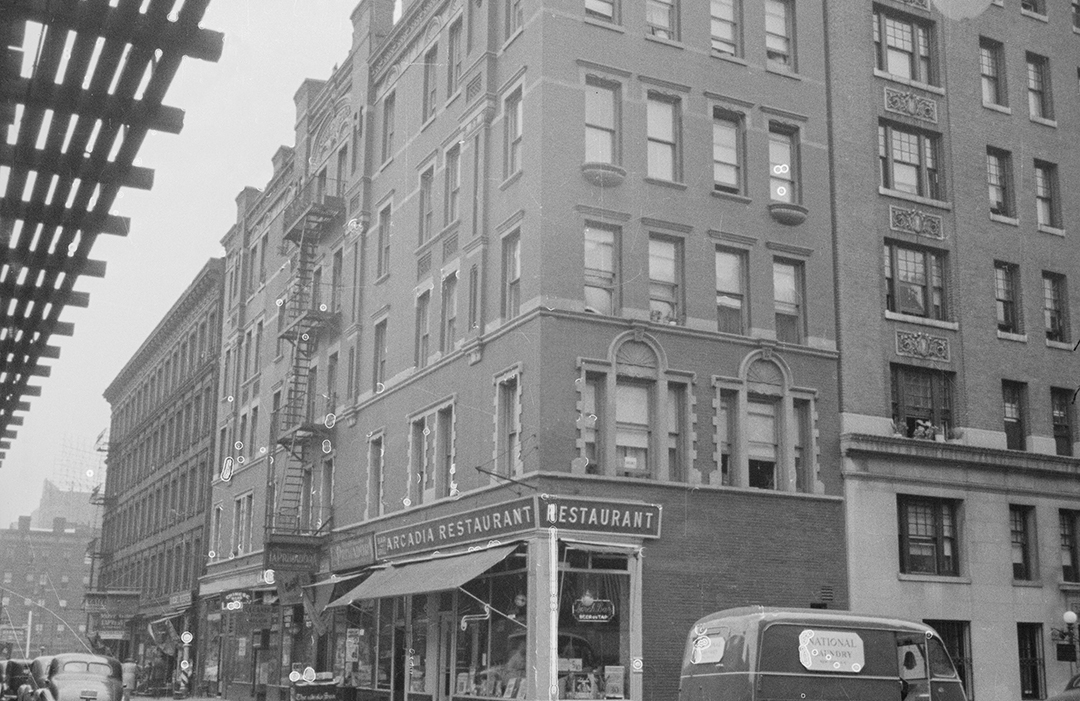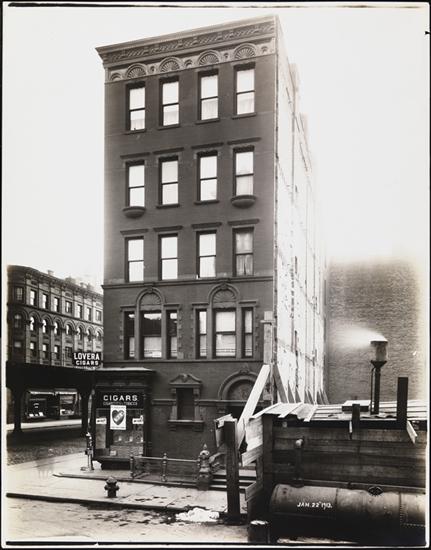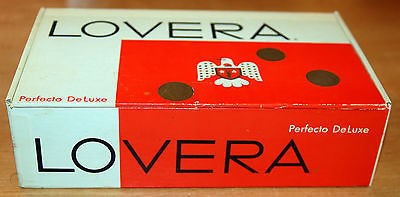
Bitter Sugar and a Literal Shotgun Wedding
by Tom Miller, for They Were Here, Landmark West’s Cultural Immigrant Initiative
In the mid-1880’s developer George J. Hamilton was busy erecting rows of high-stooped houses on the Upper West Side. He added an apartment building to the mix in 1885 when he commissioned the architectural firm of Thom & Wilson to design a “brick flat and store” along with four four-story row houses at the southwest corner of Ninth (later Columbus) Avenue and 69th Street.
The group was completed in July 1886. Thom & Wilson, known for its distinctive take on popular styles, did not disappoint with the flat building. Ground floor shops faced Columbus Avenue, while the residential entrance was located at No. 100 West 69th Street.
Predominantly neo-Grec in style, the architects liberally splashed the design with Queen Anne elements. The 69th Street elevation featured two Palladio-inspired openings at the second floor. At the third floor the outside windows wore half-bowl decorations—adequate for a pot of flowers or the elbows of an inquisitive housewife.
Loetdje, who had come to America in 1881, seemed confused when the Federal Government stepped in to break up the monopoly of the sugar industry, the “Sugar Trust,” in 1888. His focus was more on the struggling refinery workers who would lose their jobs.
The more visible Columbus Avenue side was dominated by the unusual treatment of the top-heavy chimney backs which widened into full-blown chimneys that broke through the cornice line. The central chimneys embraced a pediment that included an arch filled with exuberantly carved vines and fans.
The corner shop was leased to Gustave Loetdje for his “handsome grocery store,” as described by The Evening World. Loetdje, who had come to America in 1881, seemed confused when the Federal Government stepped in to break up the monopoly of the sugar industry, the “Sugar Trust,” in 1888. His focus was more on the struggling refinery workers who would lose their jobs.
On January 30, 1888 a reporter from The World said “he thought it very hard on the hundreds of poor workmen who were thrown out of employment at this time of year by the shutting down of some of the sugar manufactories.”
Among the tenants in 1893 was 20-year old Mable O. Clark, wife of Frederick Sherwin Clark, who was two years older. The couple had been married on June 27 that year but, according to The New York Times, “the honeymoon lasted until July 1.” According to Frederick, it had been a shotgun wedding, “forced upon him at the point of a pistol.”
The article explained that the pair had lived together for some time, but on that night Mable’s mother and aunt appeared with a minister. “Mrs. Clark threatened to shoot him and then commit suicide,” said the newspaper. “Clark preferred not to be shot.”
But after returning to the city on July 1 and taking rooms at No. 100 West 69th Street, Frederick vanished. He then hired a private investigator to gather evidence to file for divorce.
Unaware of his actions, Mabel sued for lack of support and appeared in court with her mother on July 19. Clark was there with his father. After the judge decreed that Clark was to pay $5 per week to Mabel, all parties began to file out of the courtroom. It was then that Clark’s private detective approached Mabel and tried to serve her with the divorce papers.
The couple had been married on June 27 that year but, according to The New York Times, “the honeymoon lasted until July 1.” According to Frederick, it had been a shotgun wedding, “forced upon him at the point of a pistol.”
“She discovered his game and shouted out that she was being assaulted,” reported The Times. Mabel and her mother nearly lost the detective in the crowded hallways, but he caught up with them on the street. “Mrs. Clark ran around an ash barrel. The detective ran after her. Around the barrel they raced again and again. A crowd gathered and watched the novel game of hide-and-seek.”
“At last,” said The Evening World, “Wells caught her and thrust the paper into her hands.” But then, back in the courthouse, detective Wells made a crushing discovery–the divorce papers were still in his vest pocket and he had served Mabel with his New York, New Haven and Hartford Railroad timetable.
The names of most of the residents appeared in newsprint for respectable reasons–like Gertrude de la M. Ludlam, whose daughter, Helen Denison Ludlam, was married in their apartment to Herbert F. C. Ashenden on June 6, 1900.
Alfred M. Woolley and his wife lived in the building at the time. He and W. E. Woolley, presumably his brother, were proprietors of the Hotel Marie Antoinette on Broadway between 66th and 67th Streets.
In 1929 renovations were made to the building and it was most likely at this time that the 69th Street entrance was bricked up and the doorway moved to Columbus Avenue.
Another alteration in 1981 resulted in a total of 14 apartments above the six ground floor stores. Over the next decades the shops reflected the increasingly trendy personality of Columbus Avenue. The Robert Marc eyewear boutique and optician office was here by 1984 and remains. Other shops along the row in the 1980’s were Contre-Jour, the furniture and housewares store which owner Bill Roach described in 1986 as carrying only “things I would have myself;” and Judy Corman, which dealt in modish accessory items.
The new century saw the Frank J. Miele Gallery, gourmet shop Oliviers & Company, and French tea importer La Palaise des Thés among the ground floor tenants.
The brick and stone have been painted and the windows, of course, replaced. But other than the blocked-up entrance on 69th Street and altered storefronts, Thom & Wilson’s somewhat quirky building survives little changed.
2021: DECIEM and L’Occitane en Provence have closed
Tom Miller is a social historian and blogger at daytoninmanhattan.blogspot.com
LEARN MORE ABOUT
190 Columbus Avenue
Keep
Exploring
Be a part of history!
Shop local to support the businesses currently at 190-198 Columbus Avenue:
Meet Martin Johnson!
Meet Venchi US CEO Davide Cravero!



